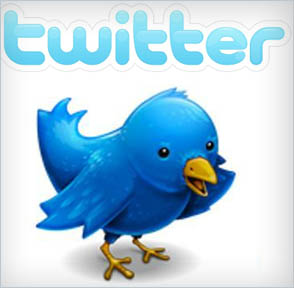Twitter opens up a new world
 Berlin - Reading any recent account about election unrest in Iran or celebrity gossip, it's easy to see that Twitter is the new big thing. Understanding exactly what Twitter is and how it works is a little more complicated.
Berlin - Reading any recent account about election unrest in Iran or celebrity gossip, it's easy to see that Twitter is the new big thing. Understanding exactly what Twitter is and how it works is a little more complicated.
More and more, media reports are referring to information released over Twitter, a name that intentionally draws parallels to the tweeting of birds to one another.
When setting up an online account with the website, www. twitter. com, users are initially encountered with the question: "What are you doing?"
The intention is clear. Users are encouraged to tell the world exactly what they're doing right at that moment. These messages - which can be no longer than 140 characters - are called Tweets and share many similarities to the text messages people regularly send from their mobile phones.
Users can then, in turn, opt to follow the Tweets of certain individuals, opening them up to a regular flow of data about the Tweeter's life and activities.
Users can be active or passive. Passive members - followers - simply read the tweets of others. Active users write tweets and have their own followers. Either way, membership is free on the English- language website.
The service appeals to no particular target group. Users can follow the tweets of newspapers, companies, celebrities or their own friends. News from all the clients to whom one has subscribed is regularly updated on the client's own profile page.
Twittering can be more than just simple chattering. That was highlighted by the tumult surrounding the presidential elections in Iran. Members of the opposition got around official censors by sending news, links, videos and images via Twitter. Many news agencies around the world relied on this feed for their news about the protests.
But, for many others, it is a simple social tool.
"Anyone who wants to use Twitter should twitter in as interesting a way as possible - amusing, with a lot of added information value and a little irony," says Sascha Lobo, one of Germany's best-known bloggers.
Followers decide the regularity of the posts.
"Some want to know everything and are grateful for any update, even if it's just to say 'I bought asparagus!' Others are happier if they only get one important link a week."
Regularly twittering about your own links or posting chat dialogue is a sure way to turn off followers. "But the best way to scare people off, without a doubt, is to just twitter about boring nonsense."
Anyone who signs up will quickly notice that completely unfamiliar people will initiate contact, offering to be followers. Accepting these requests blindly is a bad idea. The creators of Symantec security software have recently warned about phishing attacks via Twitter. Fake links to invitations contained dangerous software. As a rule, never open attached zip files either.
There are plenty of free applications to make sure users don't have to log in every time they want to see what's going on in the twitterverse. Twitterfox allows users to access the program via the Firefox browser. Several clients have made tweets available via smartphones or mobile phones.
Businesses and politicians are also warming up to Twitter. They want to reach as many people as possible, especially the ones they might not normally reach. Plenty of others see Twitter as a vehicle for business news, says Lobo.
"That doesn't automatically lead to widespread recognition in the Twitterverse," she says. After all, insights into the everyday life of a politician might be interesting. But campaign slogans are unlikely to build up much of a following on Twitter. (dpa)